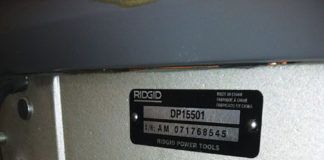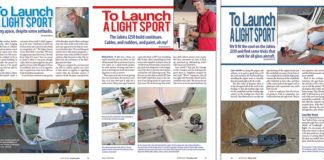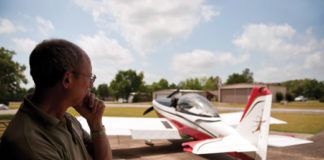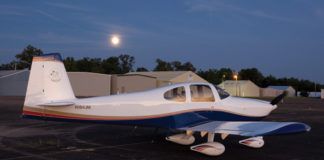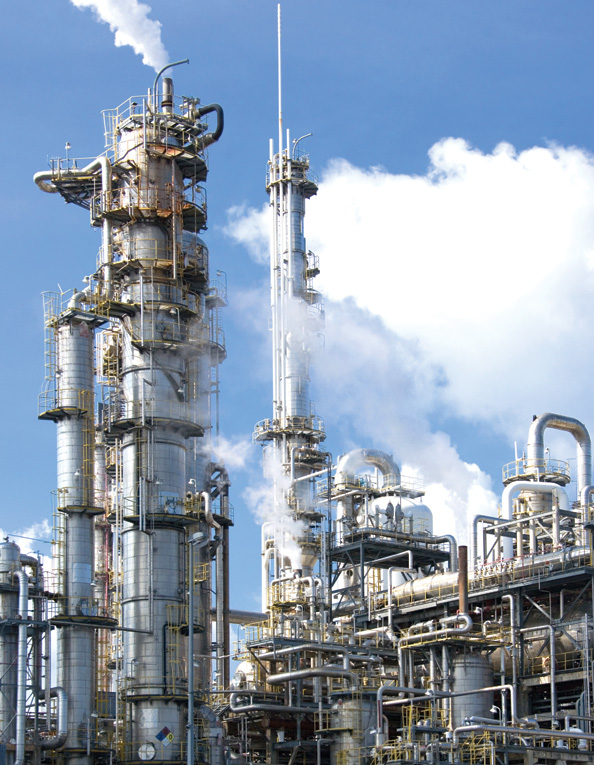
At airshows and pilot gatherings this year, the hot topics continue to include the regulars-the protracted economic malaise, ways to deal with a shrinking pilot population, which avionics company has the best gear. But a new one has emerged that promises to eclipse all other conversations: What the heck are we going to do for fuel? Its a question without a clear answer, and yet it encompasses an issue so large and potentially influential that none of us can afford to ignore it. Without clear leadership on the issue, the uncertainty of what, exactly, will fuel our aircraft after 2017 could stall any recovery. In fact, its already happening. Aircraft owners, concerned about the future of high-octane fuel, are holding off on upgrades or major overhauls for fear that a true 100-octane fuel wont be found and that modifications might be required to continue flying.
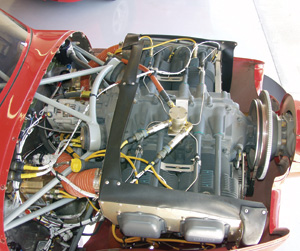
Electronic engine controls such as Continentals PowerLink FADEC will only get us a few points of octane.
Mishandled, the fuel issue could render a large portion of the general-aviation fleet obsolete, unusable, worthless.
This is not a new panic, but this time the threat of leaded fuels extinction is far more real than ever. Indeed, we have been on the cusp of leaving leaded fuels behind for more than two decades, and still while studies have been conducted and experts clicked through PowerPoint presentations, nothing happened out there at the fuel pump-well, except for the big price boost in 2008.
Its a new day. In April, the Environmental Protection Agency posted an Advanced Notice of Proposed Rulemaking (ANPRM) stating its intention of outlawing leaded fuels across the board by 2017. This date, it should be noted, is considered the latest signpost. Its possible that economic or other factors-one of which is the fact that there is one manufacturer of the tetraethyl lead we use in our fuel-could even move this deadline forward. And after all the years of talking about a replacement and not finding one, its unlikely well get another reprieve. So the industry awoke with a start this spring to the realization that programs to develop new fuels and to clear as many exiting engines as possible for use with new fuels should have been further along than they are.
In the world of Experimental aviation, we have certain freedoms that could continue to work in our favor, including the ability to run whatever fuel that we, the builders/manufacturers, feel is appropriate. But just because were in a different boat doesn’t mean we wont feel the wake of the Good Ship GA.
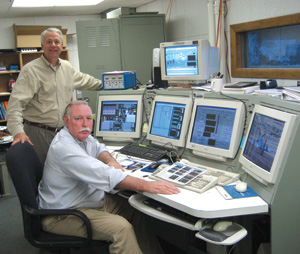
Tim Roehl and George Braly (seated) are the sharp minds behind General Aviation Modifications, Inc. (GAMI). They have discovered a combination of existing refined additives that could make 94-octane base stock into a true 100-octane fuel.
Why Lead?
The many of the conventional engines-were talking here about your basic Continentals and Lycomings, but we mean Franklins and round Pratt & Whitneys as well-were designed for or outright require a full 100-octane fuel. Use of tetraethyl lead to improve a fuels octane rating dates to the 1920s, and in itself allowed the development of lighter, more powerful gasoline engines. Availability of high-octane fuel during World War II permitted rapid advances in piston-engine technology, with some engines doubling or even tripling output from the beginning of the war to the end.
Reduced to the basics, octane is a measurement of a fuels resistance to detonation. Detonation is, according to the seminal The Internal-Combustion Engine in Theory and Practice, by Charles Fayette Taylor, the autoignition of the end gas, which is part of the charge which has not yet been consumed in the normal flame-front reaction. When detonation occurs, it is because compression of the end gas by expansion of the burned part of the charge raises its temperature and pressure to the point where the end gas autoignites.
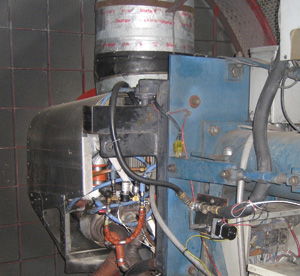
GAMIs test stand is highly instrumented and provides accurate, repeatable data. It has been used to prove G100LL fuel.
In normal combustion, the fuel/air mixture does not ignite all at once, but proceeds in an orderly fashion from the point of ignition, that being the spark plugs (in spark-ignition engines). During a detonation event, the end gases ignite before the flame front has reached them, and the resulting collision of the two flame fronts-one coming from the normal ignition path and the other from the direction of the just-ignited end gases-happens as fast, powerful pressure waves. In an automobile, you hear this as ping.
The sudden rise in combustion pressure is eminently destructive. It can damage pistons and valves, and can disturb the boundary layer of gases that separates the main combustion event from the interior of the cylinder and the head itself. When this is breached, cylinder-head temperatures rise rapidly. Generally, when detonation takes place, CHTs rise rapidly and EGTs fall slightly-but you almost certainly will not hear anything you would recognize as ping.
Detonation starts from having combustion pressures that are above the fuel/air mixtures limit of autoignition. Because detonation itself increases combustion pressures radically, this event is not just self-sustaining but self-accelerating. Light detonation can quickly turn into heavy detonation, which can rapidly become melted pistons or burned valves.
Key drivers of detonation (aside from fuel quality, for the time being) include manifold pressure (boost, for turbo engines), cylinder-head temperature, induction-air temperature, static compression ratio, mixture strength and ignition timing. Raise any of the temperatures or pressures, and the detonation margin-a term used to define a particular engines relationship to nominal detonation events-is decreased. Raise the compression ratio, and the margin decreases. Increase (advance) ignition timing, and the margin decreases. Notice, too, that all of the events (save for the increased induction-air temp) that narrow the detonation margin also help increase power or efficiency or both. Bear that in mind as you think about your future engine.
If you look at the specifications for certain engine families, the effect of gradual modifications becomes clear. The principal difference between a 150-horsepower Lycoming O-320 and a 160-hp version is the compression ratio. A Lycoming IO-390 makes 10 more horsepower than the IO-360 only in part from the extra displacement; the higher compression ratio also contributes. Engine tuners have known the basics forever: Raise a given engines compression ratio, feed it more air (through improved breathing or turbo/supercharging), and advance the timing beyond the conservative standard specs, and more power is yours for the asking. Actually, it gets even better: Raise the compression and/or advance the ignition timing and you’ll realize improved fuel efficiency, too.
Modern cars have very high compression ratios and computer-controlled ignition systems that work overtime to ensure that the most power is made from the least amount of fuel. (All the while treating the myriad emissions controls kindly.)
The Future Challenges
Until now, engine builders who worked toward higher specific output (the amount of power per cubic inch of displacement) have enjoyed a generous detonation margin to begin with. Thats because the certification requirements for aircraft engines call for no detonation with all of the temperatures at maximum and fuel flow 10% below the nominal takeoff value; in other words, the worst-case situation. These tests determine how high the compression ratio can go, what the initial timing must be and how much boost a turbocharged engine can tolerate. Reduce the head and oil temperatures, and you have bought back margin, which engine manufacturers then trade for a higher compression ratio and/or advanced ignition timing.
All of this was on our current specification of 100-octane (100LL) avgas, which actually has a rating of 100/130. (See sidebar on Page 34 for an explanation of ratings.) Some older engine designs were developed using lesser fuels, and many popular examples, the parallel-valve O-360 for instance, were certified on 91/96 fuel. Generally in the Lycoming lineup, parallel-valve engines with stock 8.5:1 compression ratios (or lower) are good to go with 91/96. According to Lycomings Service Instruction 1070, Revision P, none of the angle-valve engines (fours, sixes or eights) is on that list; all were designed for and tested on 100-octane fuel. The same goes for all of the turbocharged variants.
Back to Gas: The Leaders
With the elimination of lead in avgas on the horizon, three solutions have emerged. One, backed by Teledyne Continental Motors, is simply to leave the lead out of the fuel, which results in something called 94UL, a 94-octane fuel that will work in approximately 70% of the existing fleet. Unfortunately, its that remaining 30% of the fleet, comprising high-performance twins and singles (typically turbocharged), which cant use the fuel with current technology; that segment is responsible for consuming 70% of the fuel produced. Imagine the supply/demand pressures after a 70% loss in fuel sales-sales that are already slipping due to increased prices and a general decrease in flying.
Many believe that 94UL is the easiest of the alternatives and potentially the least expensive, but thats not the whole story. For one, we understand that the alkylates required to maintain this octane level aren’t inexpensive, and not all refiners have this technology. It is not simply a matter of removing the lead from the existing fuel. Whats more, because of the volume of avgas relative to motor fuel (about one third of one percent) is so small, we can hardly dictate the terms of production at any of the refineries likely to produce an aviation gas. Less than 10% of the refineries now produce avgas, and the trend has been toward refinery consolidation and closure. Because the United States as a whole is using less fuel, the economic pressures are downward, toward a contracting market.
While Continental has been on the 94UL bandwagon, Lycoming has become a vocal opponent of that solution. General Manager Michael Kraft is adamant that nothing less than full 100-octane fuel, a so-called drop-in replacement fuel, is going to get it done. His logic is sound on a couple of fronts, including economics. Remove the bulk of the fleet from avgas sales and the unit costs skyrocket. Anyone ready for $8/gallon avgas? How about $10 or $12/gallon? At what point do fuel prices make a large part of the industry simply wither and die? We saw how the fuel-price spike of 2008 dramatically curtailed pleasure flying, and that was with a 30% hike.
Kraft and Lycoming are also making a strong case that electronic engine controls will not get us there. According to Kraft, even sophisticated systems like Lycomings IE2 will buy just a few points of effective octane rating for high-performance engines, not nearly enough to bridge the gap from 100LL to 94UL. Continentals tack has been that a combination of electronic controls and reduced compression ratios are necessary, but then you limit power and efficiency. Imagine waking up one day to find that your engine produces 5% to 10% less power but consumes as much (or more) fuel as ever.
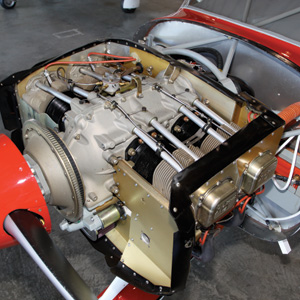
Certain lower-power engines such as this parallel-valve, 180-horsepower example might work just fine on 94UL fuel, but higher-power variants wont be so lucky.
Two other candidates include SwiftFuel, which has seen a change of philosophy recently, and GAMI (General Aviation Modifications, Inc.) G100UL. Both show promise, and both are in testing, but they are both hindered by an agonizing approval process that sets the ASTM and the FAA into a game of hot potato.
SwiftFuel began as a biomass fuel, but the company has since indicated that its fuel can be created as well from natural-gas constituents. It is whats called a binary fuel made from acetone. The acetone is converted into isopentane and mesitylene. In testing, it has proven to enjoy the needed octane and has been approved by the ASTM as a test fuel. As for downsides, they appear to be the fuels weight, which in the final product might be closer to jet than avgas (a difference of about 1 pound per gallon), and cost. Current estimates by the company are for retail prices of between $5 and $6/gallon. By acknowledging that SwiftFuel could be constructed from petroleum sources as well as through the biomass process, the company is opening avenues to more rapid, less expensive integration.
While SwiftFuel may have momentum, GAMIs G100UL is catching up fast. This fuel is really just a combination of our 94UL base stock-not exactly, but thats the general idea-combined with refined petroleum-based additives. According to GAMIs George Braly, Just like grade 100LL, G100UL can be made in dozens and dozens of different ways. At least one way to make a conforming version of the G100UL fuel can be done with the chemicals and infrastructure that now exist inside any large refinery. It is not the best way to make the best fuel, but it can be done. With some capital investment, the fuel can be made to be a still better fuel. Not exotic or particularly hard to do. If it was approved and certification ready for use, any refinery could build a million or 10M gallons of at least one version and ship it in a relatively short time frame.
As this is written, the FAA has dragged its feet about issuing an STC for GAMI to test the fuel in a limited fleet of certified, turbocharged aircraft. And the ASTM process still looms as a massive roadblock.
The Homebuilders Outlook
Being active in supporting new fuels and watching what happens with our fuel choices should be on the mind of every builder and pilot in our ranks. Just because many of us can continue to fly on what is believed to be the worse case fuel, 94UL, this doesn’t argue for general quietude. Experimental aircraft are a modest subset of general aviation, which itself is a modest subset of fuel users. Its up to us to join voices with the GA community to push the FAA and the ASTM toward workable, affordable solutions. As an industry, we have been toying with finding a replacement for 100LL for too long. Without a doubt, 2017 will be here before you know it.

